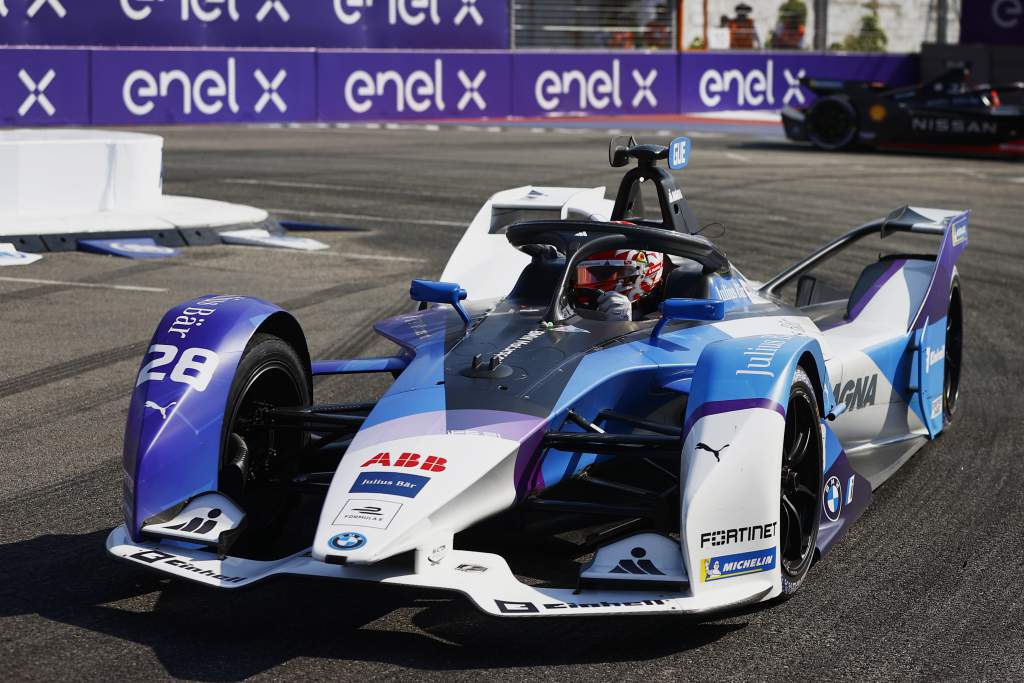The incident that changed the complexion of Formula E’s opening New York E-Prix and allowed Maximillian Guenther to vault leading duo Nick Cassidy and Jean-Eric Vergne is viewed with fascinatingly different opinions by the three drivers involved.
Cassidy led Vergne for all bar the final eight laps of the race, when the DS Techeetah driver sent a move down the inside of the Envision Virgin Audi into the hairpin.
The resulting contact between the pair allowed Guenther – who had closed a gap that had been as large as three seconds to join their fight – to capitalise and squeeze past the squabbling pair in what was ultimately the race winning move.
Two birds. One stone. pic.twitter.com/qePLSKUDWG
— The Race (@wearetherace) July 10, 2021
Cassidy lost out the most, being shuffled down from the lead to fourth.
But he felt his race had already been compromised by the brief full course yellow that covered a minute of his second attack mode boost and essentially robbed him of its use.
The Kiwi, who had used more energy than his pursuers in the first half of the race, had taken his last attack boost a lap later than Vergne and was aiming to bring himself back to equal energy with the advantage “one lap later or to extend the gap, but I lost that by having my attack in the full course yellow.”
“From that point on I was fighting basically, I was always going to be coming under pressure,” Cassidy explained to The Race.
He was also not entirely comfortable with his Audi e-tron FE06 and on several occasions radioed to his engineer Stephen Lane that he was struggling with understeer.
“Ultimately I wasn’t as quick as I wanted to be in the last third of the race, and that’s being like super critical of myself for sure, but we’re pretty close on performance and we could be challenging all the time right now,” Cassidy said.
That set the scene for Cassidy’s lead vanishing, and created the circumstances for the incident with Vergne.
“It was ultimately unfortunate for him because he probably should have won that race” :: Nick Cassidy
Cassidy said that he “saw him coming” because he had observed the DS Techeetah driver over-consuming on the previous two corners to “tee something up.”
“I think he was going to get the move done anyway, there were eight laps to go,” Cassidy added.
“So I chose pretty early on not to defend but of course covered a little bit but I didn’t drive to the inside or make it impossible for him to move because I thought if I did that with eight laps to go I’m going to have nothing [in terms of energy] with three laps to go.
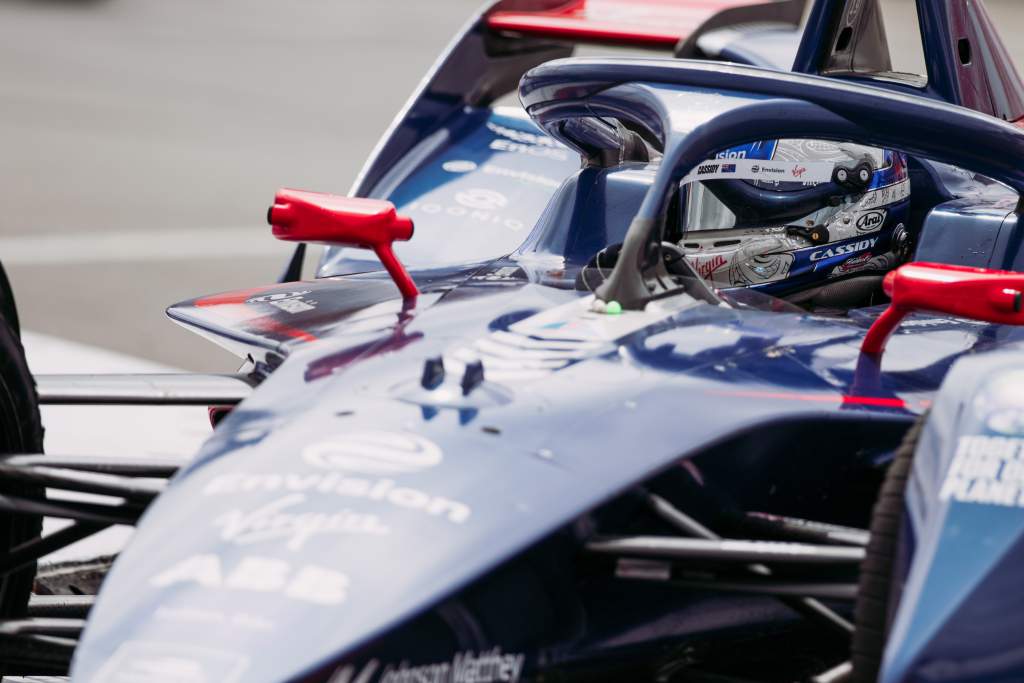
“I guess it’s a bit annoying that he missed the apex or went a bit deep but we definitely didn’t touch earlier in the corner, he just went a bit deep.
“I mean it’s doable on the inside, it’s very easy to do, it’s just unfortunate because I ended up losing three positions out of it.
“I think it was ultimately unfortunate for him because he probably should have won that race.”
Vergne did wonder whether he had made the move too soon as he knew he had a small energy advantage over Cassidy heading into the final phase of the race, but added that he seldom dwells on hindsight.
“I needed to do something to go for it but our cars touched and I couldn’t rotate it,” Vergne told The Race.
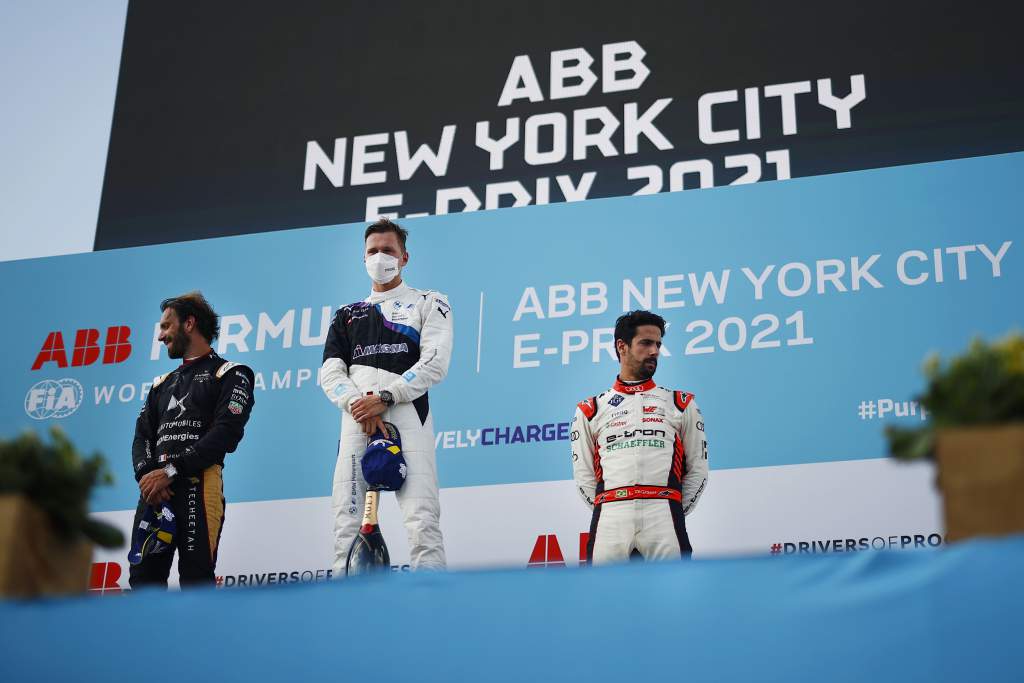
“Maybe I should have waited more for him to be more struggling with the energy and pass him later.
“But with ifs I can do a lot of races and win a lot of races.”
For Guenther the move was “instinctive” but it had its foundations in a strategic call earlier in the race.
The BMW i Andretti driver was fighting against a frantic pace of the event, which was exacerbated by race director Scot Elkins deciding not to make an energy reduction for the brief full course yellow to retrieve Mitch Evans’s stranded Jaguar.
This was because the yellow was out for less than a minute but it had the effect of upping the pace and essentially meaning that Guenther’s accrued energy advantage became less relevant.
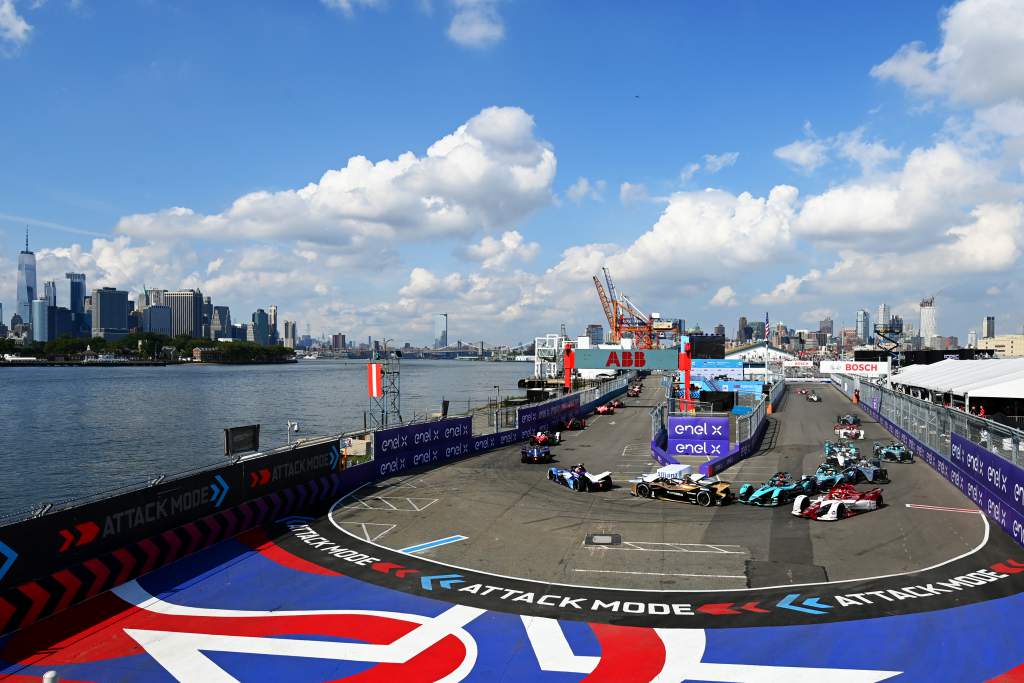
The nature of the Red Hook track makes overtaking difficult in Formula E terms, even with the 35kW of extra power from the attack mode activations.
This was why he decided to close what had been a three second gap and in so doing was able to be in exactly the right position to capitalise when Vergne made his move.
“I knew he will go for it with more energy, and Nick seemed to be defending quite hard for a few laps,” Guenther told The Race.
“So I was quite certain that something will happen.
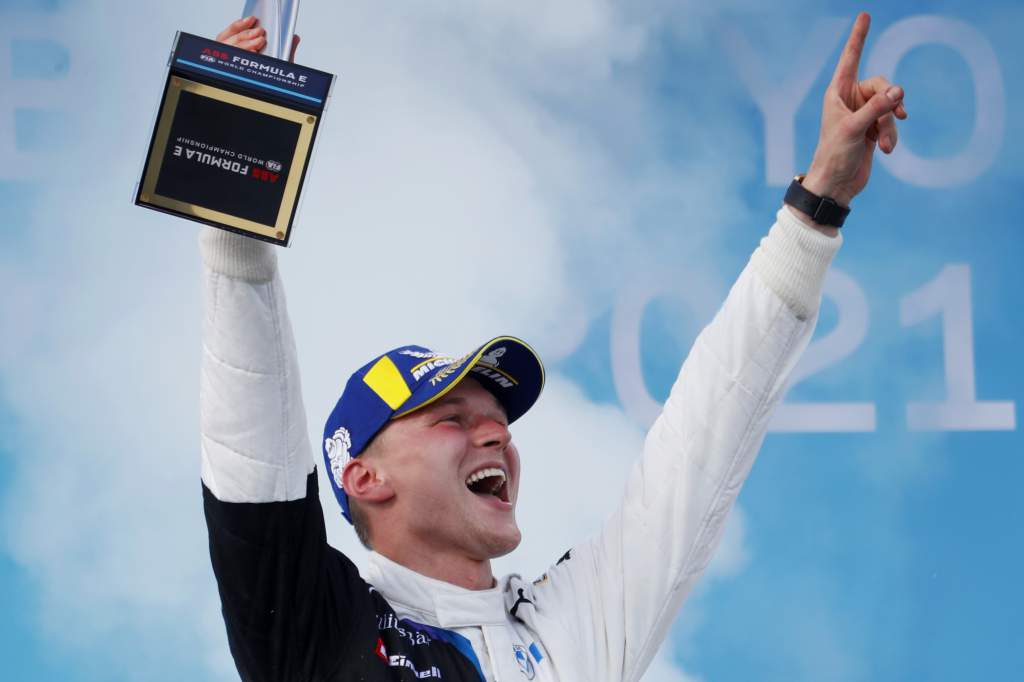
“I just tried to position myself well and honestly when you see two guys fighting, maybe you think one position you can gain but hardly ever two.
“So to get both was very satisfying. It’s a great feeling to know you win a race with an opportunistic move like this.”
Guenther confessed that he also had “half an eye on the mirrors” due to the close proximity of the fourth placed Lucas di Grassi.
“If I did something wrong, then I could even lose the position to Lucas and I knew even though he had a bit less energy to me, it would be really difficult to get this position back,” he said.
“That’s why I tried to find a good compromise and a good solution to still put myself into a good position and it worked perfectly for me.”

